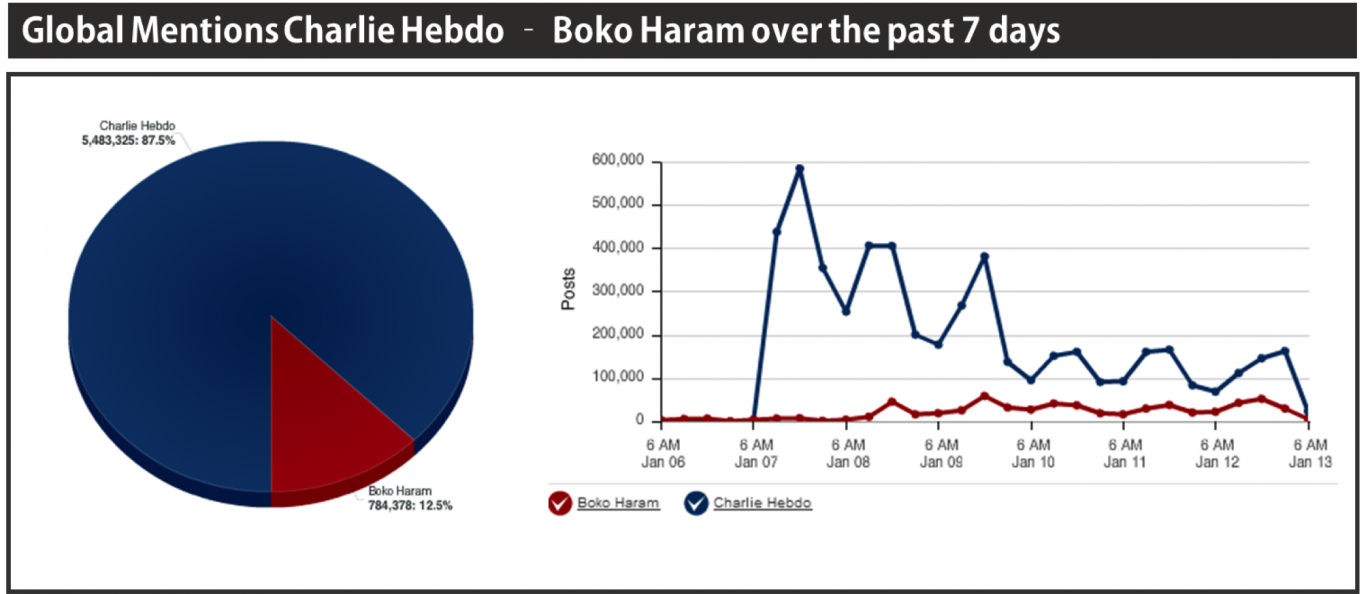A Killing: Does Charlie Mean More Than Boko Haram?
It’s a controversial topic on the minds of many, and although every loss of life is a tragedy, what makes one piece of news more newsworthy than another, if not the scale and local relevance?
Are certain topics given a greater amount of attention based on media owners, whose socio political beliefs determine the importance of one topic over another? Or is one topic favoured in view of its impact on foreign policy; the beneficial aspect instability sometimes brings for Western countries in terms of access to African resources?
This past week has been punctuated with so much international tragedy that it has left the media – in the wake of the Charlie Hebdo terrorist attack – almost oblivious to what has been happening on our own continent. Boko Haram’s senseless massacre of an entire town and the recent series of child suicide bombings, have seen very little traction in global mainstream and social media.
Internationally, in the last 7 days there has been almost 5 million (5,483,325) social and online news mentions of the attack in Paris, but only 667,692 mentions of the massacre in Baga, Nigeria and all Boko Haram developments.
 However, locally we’ve given the two tragedies equal attention with 52% (9,012 mentions) of the conversation around Charlie Hebdo and 48% (8,451 mentions) around Boko Haram. Conversation peaked on Twitter over criticism around the lack of global reporting with regards to the massacre in Baga.
However, locally we’ve given the two tragedies equal attention with 52% (9,012 mentions) of the conversation around Charlie Hebdo and 48% (8,451 mentions) around Boko Haram. Conversation peaked on Twitter over criticism around the lack of global reporting with regards to the massacre in Baga.
Why is this? The reasons are many and complex. But, it’s no secret that social now leads mainstream news. It is instant, accessible and, for the most part, it creates publishers and journalists out of every user, therefore making it ubiquitous.
Is it possible that the lack of social accessibility in Africa may be the biggest reason behind the disparate international coverage of the Charlie and Baga tragedies? It would be hard to argue to the contrary that it is indeed a contributor.
Globally a news traction graph tells an interesting story (above). With Charlie Hebdo you see an immediate sharp spike in the breaking of the news and an additional series of spikes as the story develops. At peak one, the initial news of the events taking place at Charlie Hebdo breaks. At the second peak two of the killer’s identities are released. At peak three; the suspects are killed and additional terror attacks occur. At this resolution the conversation winds down as the news search for collateral stories related to the tragedy. This is the typical pattern of a crisis.
Boko Haram’s attack on Baga and the attacks taking place thereafter show a similar crisis trend pattern but on a much smaller scale. However comparatively. The news pattern looks relatively stable.
Is social accessibility a necessary factor in global newsworthiness? Or, are European problems globally impactful and Africa problems just… well, Africa’s problem?
Find Out More
-
The metaverse – Is it important for your business?
June 2, 2022
-
First Year At A Job And It Had To Be 2020!
June 11, 2021
-
PR trends accelerated by the COVID-19 pandemic
February 19, 2021

